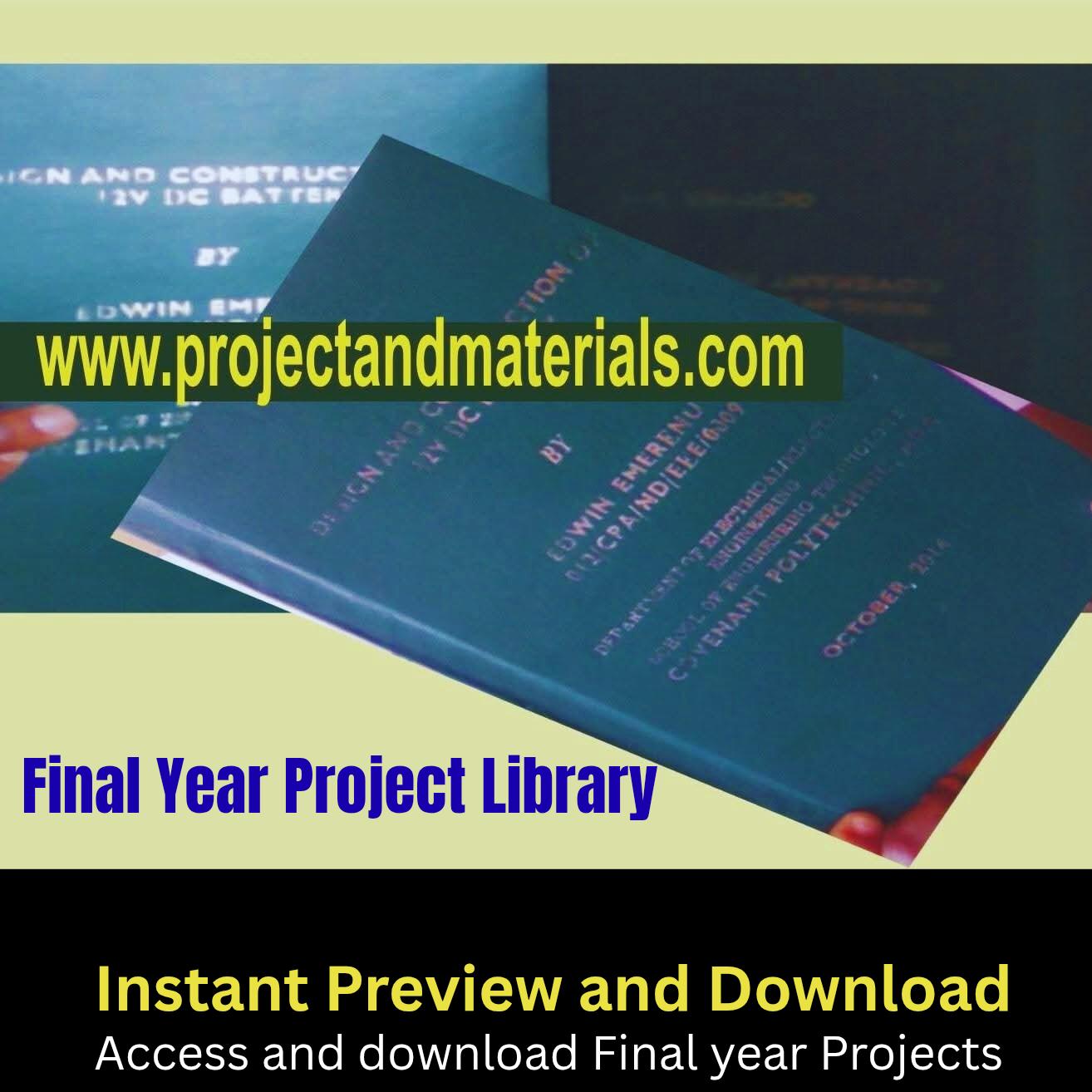DEVELOPMENT OF BREAKTHROUGH TIME CORRELATIONS FOR CONING IN BOTTOM WATER SUPPORTED RESERVOIRS
📄 Project Abstract
This research work mainly investigates the development and the behavior of cones (both water and gas cones) in oil reservoirs supported by strong aquifer, and from which analytical correlations are developed for quick engineering estimates of the time for water/gas cones to break into the perforations of the producing wells. The studies treated the cone development and breakthrough times in both horizontal and vertical well producing reservoirs and made analysis on them. The Ozkan and Raghavan (1990) method was employed as the base approach in the modeling of the cones; as well as their breakthrough times and then compare with that of Chaperon's approach(1986) with both the horizontal and vertical well applied. The developed models were then run on field data, the results were graphically represented in both the horizontal and vertical well cases. Analytical correlations were then developed from the results obtained for breakthrough time estimation and compared with literature on examp...
🔍 Key Research Areas Covered
- ✅ Literature Review & Theoretical Framework
- ✅ Research Methodology & Data Collection
- ✅ Data Analysis & Statistical Methods
- ✅ Findings & Results Discussion
- ✅ Recommendations & Conclusions
- ✅ References & Bibliography
📚 Complete Project Structure
- Problem Statement & Objectives
- Theoretical Framework & Related Studies
- Data Collection & Analysis Methods
- Findings & Statistical Analysis
- Recommendations & Future Research
- Questionnaires, Data, References
⭐ Why Choose This Petroleum Engineering Project Topics Project?
🎯 Well-Researched
Thoroughly researched with current and relevant sources
📊 Complete Data
Includes statistical analysis and detailed findings
✍️ Original Content
100% original research with proper citations
📝 Properly Formatted
APA/MLA formatting with table of contents
🎓 Supervisor Approved
Meets university standards and requirements
⚡ Instant Download
Immediate access after purchase
🔗 Related Petroleum Engineering Project Topics Project Topics
💬 What Students Say
"This project provided excellent guidance for my Petroleum Engineering Project Topics research. The methodology was clear and the data analysis helped me understand the proper approach."
Full Citation:
Amarfio, Eric Mensah. (). DEVELOPMENT OF BREAKTHROUGH TIME CORRELATIONS FOR CONING IN BOTTOM WATER SUPPORTED RESERVOIRS. African and General Studies, 40, 14858.
Citation Formats:
APA
Amarfio, Eric Mensah. (). DEVELOPMENT OF BREAKTHROUGH TIME CORRELATIONS FOR CONING IN BOTTOM WATER SUPPORTED RESERVOIRS. African and General Studies, 40, 14858.
MLA
Amarfio, Eric Mensah. "DEVELOPMENT OF BREAKTHROUGH TIME CORRELATIONS FOR CONING IN BOTTOM WATER SUPPORTED RESERVOIRS." African and General Studies, vol. 40, , pp. 14858.
Chicago
Amarfio, Eric Mensah. "DEVELOPMENT OF BREAKTHROUGH TIME CORRELATIONS FOR CONING IN BOTTOM WATER SUPPORTED RESERVOIRS." African and General Studies 40 (): 14858.
Full Citation:
Amarfio, Eric Mensah. (). DEVELOPMENT OF BREAKTHROUGH TIME CORRELATIONS FOR CONING IN BOTTOM WATER SUPPORTED RESERVOIRS. African and General Studies, 40, 14858.
Citation Formats:
APA
Amarfio, Eric Mensah. (). DEVELOPMENT OF BREAKTHROUGH TIME CORRELATIONS FOR CONING IN BOTTOM WATER SUPPORTED RESERVOIRS. African and General Studies, 40, 14858.
MLA
Amarfio, Eric Mensah. "DEVELOPMENT OF BREAKTHROUGH TIME CORRELATIONS FOR CONING IN BOTTOM WATER SUPPORTED RESERVOIRS." African and General Studies, vol. 40, , pp. 14858.
Chicago
Amarfio, Eric Mensah. "DEVELOPMENT OF BREAKTHROUGH TIME CORRELATIONS FOR CONING IN BOTTOM WATER SUPPORTED RESERVOIRS." African and General Studies 40 (): 14858.

Document Details
| Author | Amarfio, Eric Mensah |
|---|---|
| 📁 Field | Petroleum Engineering Project Topics |
| 🏷️ Type | Management and Business project topics |
| Pages | 101 Pages |
| Words | 15155 words |
| 📘 Chapters | 1 to 5 Chapters |
